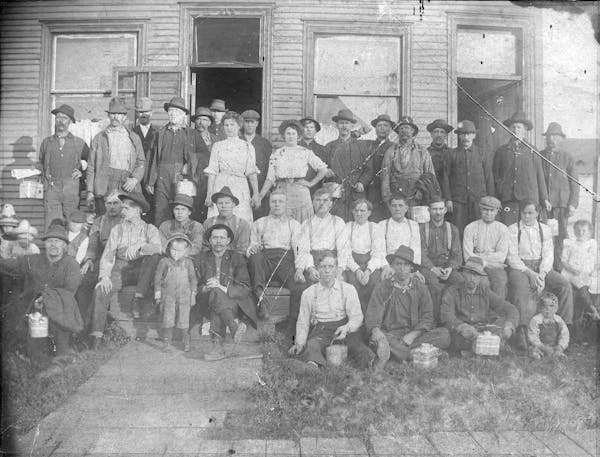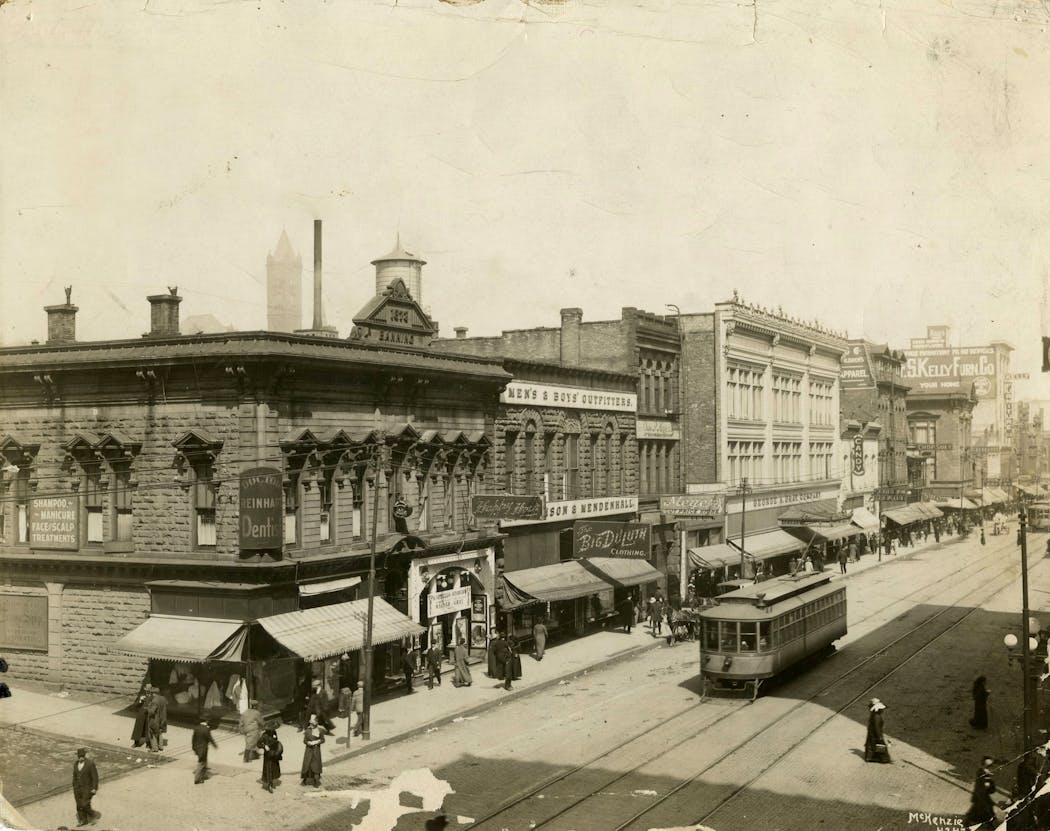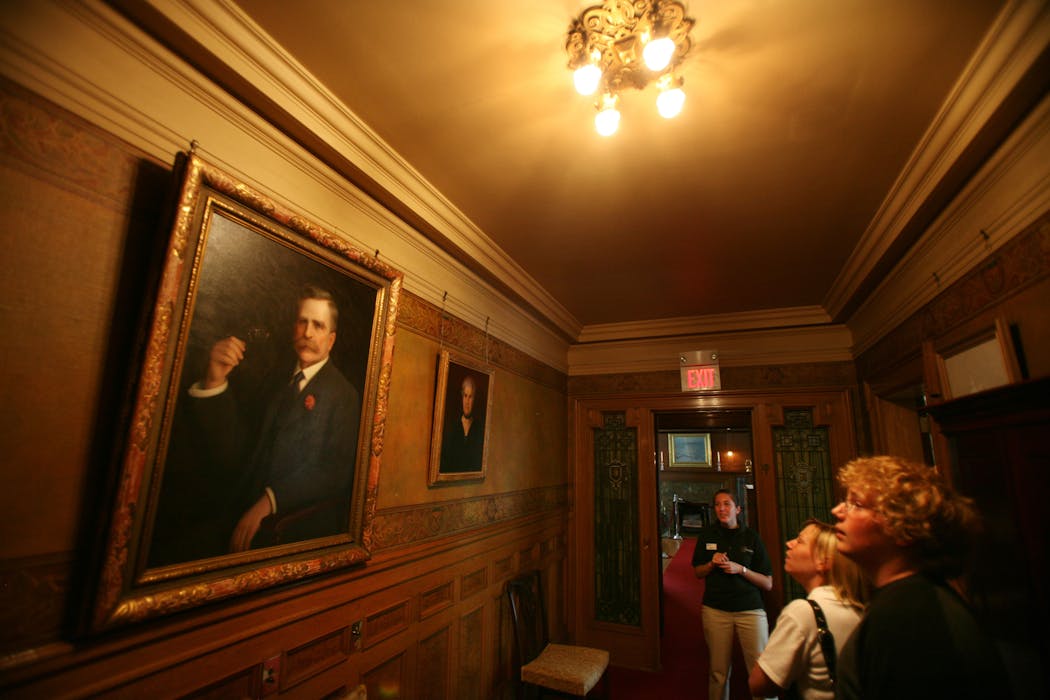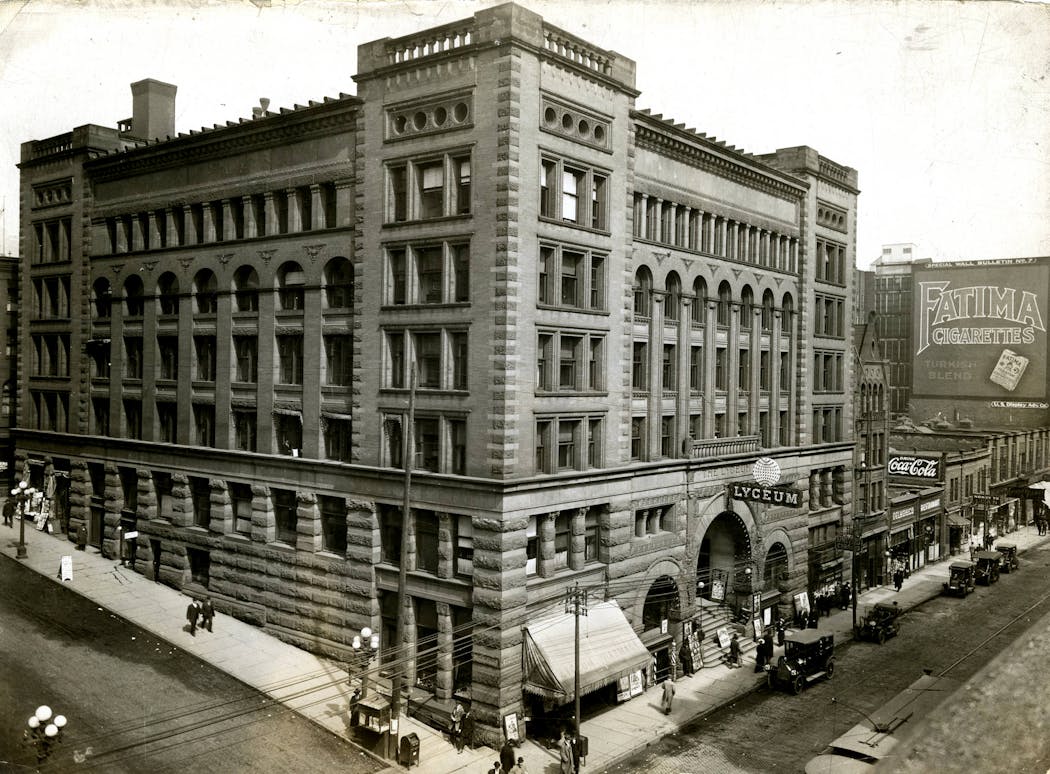Was Duluth once home to more millionaires per capita than any other U.S. city?
Listen and subscribe to our podcast: Via Apple Podcasts | Spotify | Stitcher
Nearly every history of Duluth touches on the city's heyday as an American boom town packed with lumber and mining industrialists. This era is often summarized by a claim that has been repeated by city boosters for more than a century:
Duluth had more millionaires per capita at the turn of the 20th century than any other city in the United States. Or so they say ...
This superlative statement dates back to the early 1900s. Even the state's governor was promoting it — albeit a slightly modified assertion.
"They tell me that you have more millionaires in Duluth than any city in the Northwest," Gov. John A. Johnson said to an overflow crowd at Duluth's Lyceum Theatre in 1906.
It remains well-known local lore today. The claim was dished like hot gossip to visitors at Duluth's recent Catalyst Content Festival, appears in many local history books and is featured on several of the city's websites.
But is it true? A reader turned to Curious Minnesota, the Star Tribune's community-based reporting project, to find out.
'Zenith City'
At the end of the 19th century, Duluth was ascendant as one of the country's major industrial hubs.
Trainloads of iron ore began pouring into the city from the newly tapped Mesabi Range in the early 1890s. The state's logging industry — a national leader — had shifted its operations to northern Minnesota. Thousands of ships traversed through the port of Duluth-Superior.
Author Joaquin Miller, writing for the New York Independent in the late 1880s, predicted that Duluth would someday surpass the size of Chicago and become the greatest city on this side of the Rocky Mountains.
"And when they have got a city built in Duluth as big as Chicago, they will begin right off, the very next day, and build a city a great deal bigger than Chicago," Miller wrote.
The "Zenith City of the Unsalted Seas," as it had been nicknamed, was growing rapidly. Its population more than doubled between 1890 and 1910 — to 78,000.
David Ouse, a longtime reference librarian at the Duluth Public Library, highlighted a 1902 editorial in the Duluth News-Tribune that contains some of the earliest specific claims regarding the city's millionaire population.
In it, the city was described as "rapidly becoming a center of wealth." The editorial stated that the city of 54,000 people had more than $10 million of deposits in local banks. Ouse said the accuracy of that statement is questionable, however.
"A well posted man was discussing Duluth's great prosperity yesterday," the editorial stated. "He said 'Duluth probably has as many millionaires and men worth half a million to a million, as any city of its size in the union.' "
The source went on to say that there were at least eight, possibly 10 millionaires living in Duluth at the time — and that it would be hard to find as many in a similarly sized western town. Some of these very rich men were purposefully not mentioned in the column, or on any other lists of millionaires.
"There is a very general antipathy among Duluth's wealthy men to any public notoriety, and most people will agree that it is very sensible in them," according to the editorial.
Ouse said he doesn't have any concrete evidence that the claims in the editorial are true. It has numbers, but they aren't verifiable, he said.
"Sorry," he wrote in an email. "As a reference librarian I always wish I had the definitive answer, but not this time."
A wealthy group
The data may be lacking, but Duluth was certainly home to a number of millionaires during this period.
An 1892 list of the country's millionaires published in the New York Tribune lists four living in Duluth — compared with more than 40 in Minneapolis, a much larger city. These industrialists had built fortunes in lumber, mining, banking and real estate: Joseph Sellwood, John D. Howard, Luther Mendenhall and Andreas M. Miller.
Only Miller, who built the aforementioned Lyceum Theatre, appears on an updated list a decade later — alongside six new alleged millionaires. Nearly all had roots in mining: D.T. Adams, Marshall H. Alworth, Alfred Merritt, and Robert B. Whiteside. H.F. Davis is listed as a merchant.
Some of these names resonate in northern Minnesota more than a century later.
A West Duluth park and creek are named after the Merritt family, the first to exploit the Mesabi Range. The former Merritt Elementary School is now Merritt School Apartments. A building on W. Superior Street and the University of Minnesota Duluth's on-campus planetarium are named Alworth, after the prominent lumber and mining magnate. Whiteside Park in Ely, Minn., named after a lumber boss, hosts events ranging from the Ely Winter Festival to its popular Blueberry Festival.
The 1902 editorial from the News-Tribune appears to be in response to the millionaires list. When the "well posted man" was asked to name Duluth's millionaires, he goes quiet on details.
"It would not be a difficult thing to assemble the names of most of them, but their publication in a newspaper would offend, in most cases," he reportedly said. "Not long ago a New York institution that issues a compendium of information each year wrote to a Duluth man to forward a list of the Duluth millionaires. Two of the Duluth men who were easily such, strenuously objected to being placed on the list."
One claimed he was worth only $75,000. The other begged to be left off.
Chester Congdon, an East Coast transplant and lawyer for Oliver Mining who was an investor in the Mesabi Iron Range, must have been left off. As word of Duluth's millionaires was gathering momentum, Congdon was building his $854,000 Jacobean mansion, Glensheen. The 39-room mansion was built on the east side of town — where there are still signs of Duluth's early wealth.
"Emerging from ramshackle pioneer villages that attracted the ambitious, hardworking and the well-connected, Duluth evolved into a suburban metropolis between 1890 and 1910," according to a report commissioned by the Duluth Heritage Preservation Commission in the mid-2000s. These wealthy families largely settled on the city's east end, the report said, partly because the terrain was too "rocky and too costly for the working class to develop."
A marketing ploy?
A lot of cities still make similar claims about their turn of the century millionaires per capita, including Buffalo, N.Y., Clinton, Iowa, and Independence, Kan.
A 2000 article in Forbes magazine describes the "most millionaires per capita" lore as quaint. The only such boast with merit, according to the article, is Cheyenne, Wyo., which had eight millionaires in a town of 3,000 in 1880 — before the cattle industry there was stalled by a deep freeze.
Local historian Tony Dierckins has spent decades researching Duluth's history and maintains the Zenith City Press website on the topic. The millionaire claim has no statistical data to support it, he said.
Dierckins said it was a marketing ploy helped along by the early 1900s version of the Chamber of Commerce — the Commercial Club.
"It's a promotional thing," he said. "Every mayor since I moved to Duluth has repeated it. It's not true. You can go back and search, which I have, and there is no national list of millionaires per capita."
Read more Curious Minnesota stories:
Is Duluth the most inland seaport in North America?
If Duluth Minnesota is the great outdoor City why then do they only have a couple of bike lanes?
What did the topography of the Iron Range look like before it was mined?
How lumberjacks harnessed an 'ocean of pine' to build Minnesota
Was the Minneapolis Park Board created to benefit wealthy land owners?
Why does the Stone Arch Bridge cross the river at such an odd angle?








